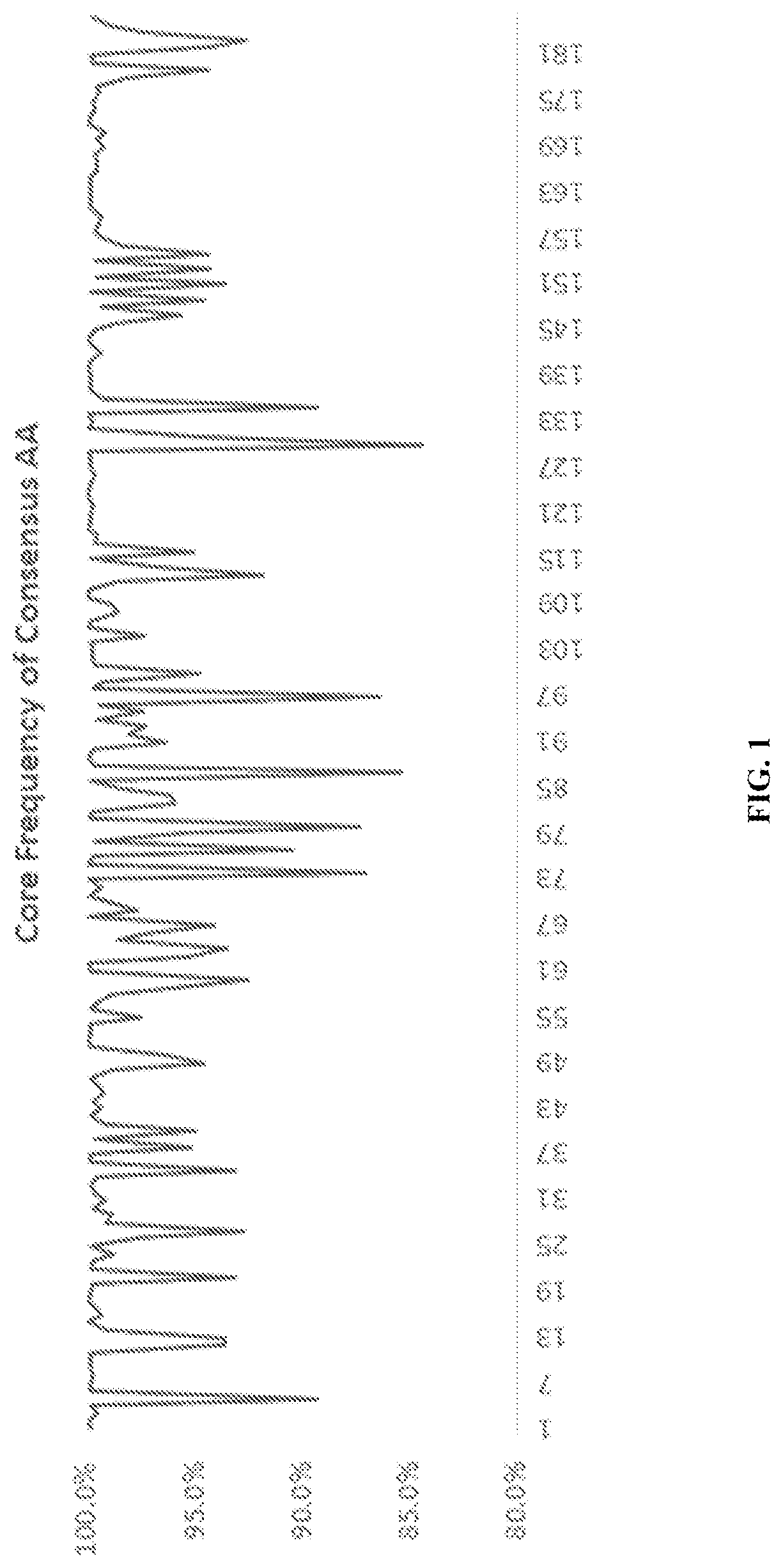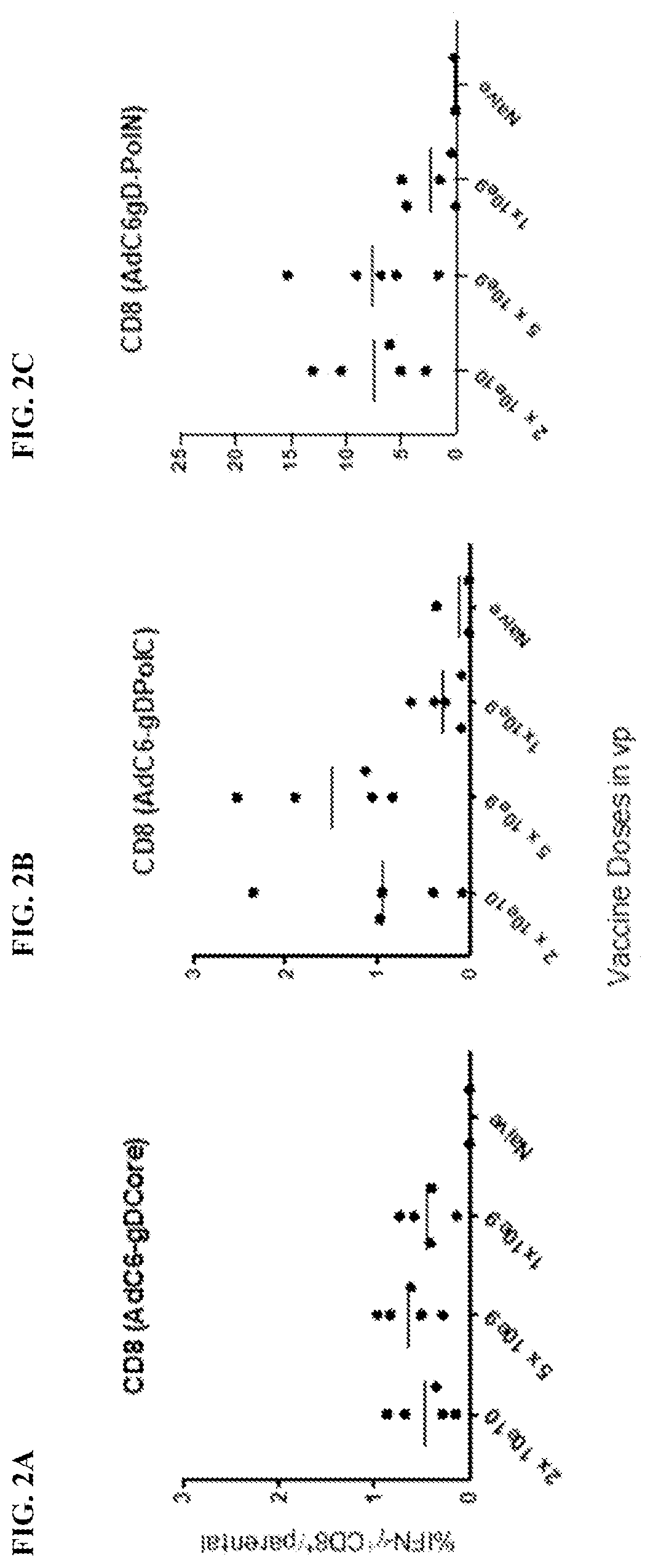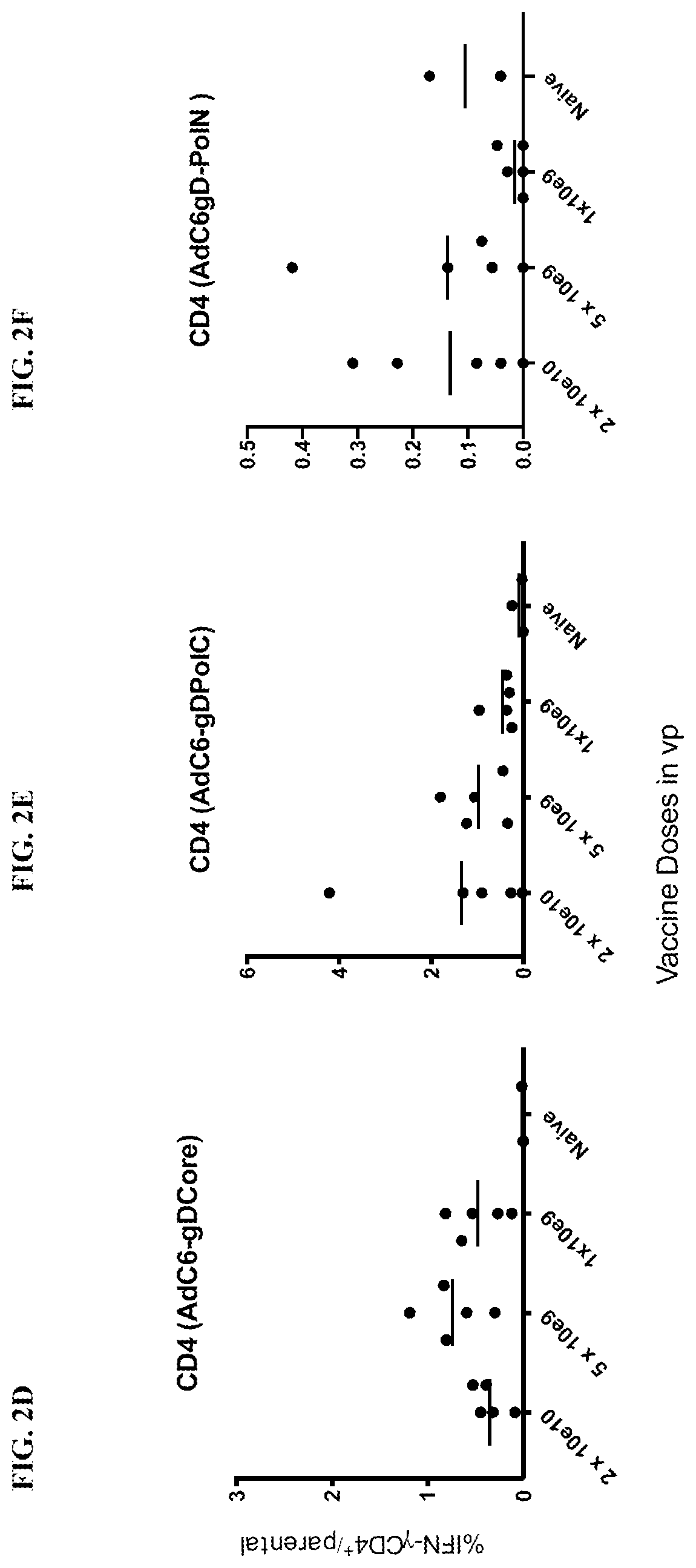Adenoviral vectors encoding hepatitis b viral antigens fused to herpes virus glycoprotein d and methods of using the same
a technology of herpes virus and glycoprotein, which is applied in the field of adenoviral vectors encoding hepatitis b viral antigens fused to herpes virus glycoprotein d and methods of using the same, which can solve the problem that the burden of chronic hbv infection is a significant unmet medical problem worldwid
- Summary
- Abstract
- Description
- Claims
- Application Information
AI Technical Summary
Benefits of technology
Problems solved by technology
Method used
Image
Examples
examples
[0160]The following examples are provided to further describe some of the embodiments disclosed herein. The examples are intended to illustrate, not to limit, the disclosed embodiments.
Generation of an Epitope-Optimized Core Sequence
[0161]Hepatitis B virus (HBV) can be grouped into several genotypes, based on phylogenic clustering. To assist in the development of an antigen insert for a multi-genotype HBV vaccine for patients with chronic infections, a preliminary bioinformatics evaluation of the genes encoding the HBV Core and HBV polymerase across genotypes A, B, C and D was conducted.
[0162]The Core amino acid sequences from the four major HBV clades were downloaded as aligned ClustalW sequences from Hepatitis B Virus database (HBVdb) (release version 45.0; last updated on Aug. 2, 2018). The amino acid sequences represented thousands of HBV genomes inputted from users across Europe, as summarized in the following table.
TABLE 1Number of unique Core genomes analyzedGenotypeHBV GeneU...
experiment # 3
Experiment #3—Breadth of the PolN-Specific CD8+ T Cell Response in AAV8-1.3HBV Infected Mice
[0216]Purpose—To assess if the presence of HBV affects the breadth of the CD8+ T cell response to PolN expressed within gD by the AdC vaccines.
[0217]Methods—Mice were injected i.v. with the 1010 or 1011 vg of the AAV8-1.3HBV vectors and were boosted 2 months later with the corresponding AdC7 vectors. Control mice received only the AdC6-gDPolN vector. Mice were euthanized 10 weeks later and the pooled splenocytes were tested against pools of peptides in the non-AAV infected animal study. Results are provided in FIG. 20A-FIG. 20C.
[0218]In a second experiment, mice were injected i.v. with the 1010 or 1011 vg of the AAV8-1.3HBV vectors. Four weeks later they were vaccinated with 5×1010 vp of the AdC6-gDPolN vector. Control mice received only the AdC6-gDPolN vector. Naïve mice served as additional controls. Splenocytes were analyzed 6 weeks later for IFN-γ-producing CD8+ T cells in response to ind...
experiment # 4
Experiment #4—Functions of Hepatic PolN-Specific CD8+ T Cells in AAV8-1.3HBV Infected Mice
[0220]Purpose—To evaluate if liver-infiltrating PolN-specific CD8+ T cells remain functional in AAV8-1.3HBV infected mice.
[0221]Methods—In the first experiment, C57BL / 6 mice were injected i.v. with 3×1011 vg of AAV8-1.3HBV. One group was vaccinated 8 weeks later with 5×1010 vp of AdC6-gDPolN vector. The other group was left unvaccinated. Mice were euthanized 4.5 months later and splenocytes were tested for frequencies of CD8+ T cells producing IFN-γ in response to the PolN peptide pool.
[0222]In the second experiment, mice were injected with graded concentrations of AAV8-1.3HBV (1×1010, 4×1010, or 1×1011). All mice were vaccinated 4 weeks later with 5×1010 vp of the AdC6-gDPolN vector. The mice were boosted 2 months later with the same dose of the AdC7-gDPolN vector. Mice were euthanized 2 months later and lymphocytes were isolated from livers and tested for CD8+ T cells producing IFN-γ in respo...
PUM
| Property | Measurement | Unit |
|---|---|---|
| time | aaaaa | aaaaa |
| threshold | aaaaa | aaaaa |
| nucleic acid | aaaaa | aaaaa |
Abstract
Description
Claims
Application Information
 Login to View More
Login to View More - R&D
- Intellectual Property
- Life Sciences
- Materials
- Tech Scout
- Unparalleled Data Quality
- Higher Quality Content
- 60% Fewer Hallucinations
Browse by: Latest US Patents, China's latest patents, Technical Efficacy Thesaurus, Application Domain, Technology Topic, Popular Technical Reports.
© 2025 PatSnap. All rights reserved.Legal|Privacy policy|Modern Slavery Act Transparency Statement|Sitemap|About US| Contact US: help@patsnap.com



